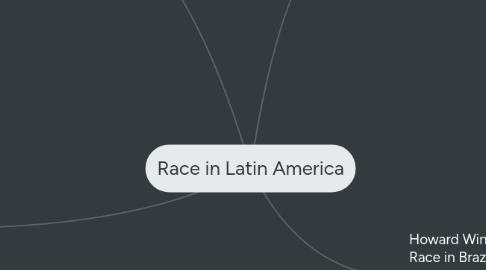Race in Latin America
by Jerry Espinoza

1. Howard Winant, “Rethinking Race in Brazil"
1.1. Purpose is to contribute to peace and security by promoting international collaboration through education, science, and culture in order to further universal respect for justice, the rule of law, and human rights along with fundamental freedom proclaimed in the United Nations Charter.
1.2. Racial meanings pervade US society, extending from the shaping of individual racial identities to the structuring of collective political action on the terrain of the state.
1.3. Believe race is "an unstable and de-centered complex of social meanings constantly being transformed by political struggle."
2. Afro-Mexicans
2.1. In the 1970s in Colombia, regional indigenous movements were growing fast against a background of proposals for land reform, the reform of church-state relations, and the emergence of left-wing guerrilla groups.
2.2. Palenques are famed for their resistance, generally because they crop up in colonial records when the authorities mounted expeditions to crush them, and the martial overtones of cimarronismo harmonize nicely with African independence struggles and with the militancy of the North American and Caribbean black power movement.
2.3. Blacks are no longer as "invisible" as they once were.
3. Asian Immigration to Latin America
3.1. The first migrants from Asia settled mainly on the highlands that run along the western side of the hemisphere, particularly what has been called “nuclear America,” or Mesoamerica and the central Andes.
3.2. The mass migration of Chinese “coolies” in the 19th century to Cuba and Peru, and their continuing arrivals as free migrants to those two countries and Mexico.
3.3. Asian relations with descendants of Africans in the region; and immigrant culture.
4. Indigenous Communities
4.1. The development of hydroelectricity in Chile illustrates a situation where water resources can be both well and badly managed when a private or public utility company.
4.2. Indigenous Mapuche Indian communities living in southern Chile are locked in a fierce battle with the state as they try to reclaim their "ancestral" lands, large portions of which were annexed at the end of the 19th century.
4.3. The Mapuche Indians are a very important tribe to remember in the Americas. They are one of the few tribes who have survived almost totally unchanged in their traditions.


